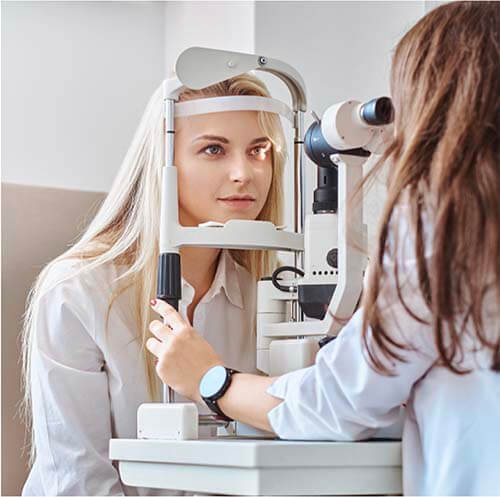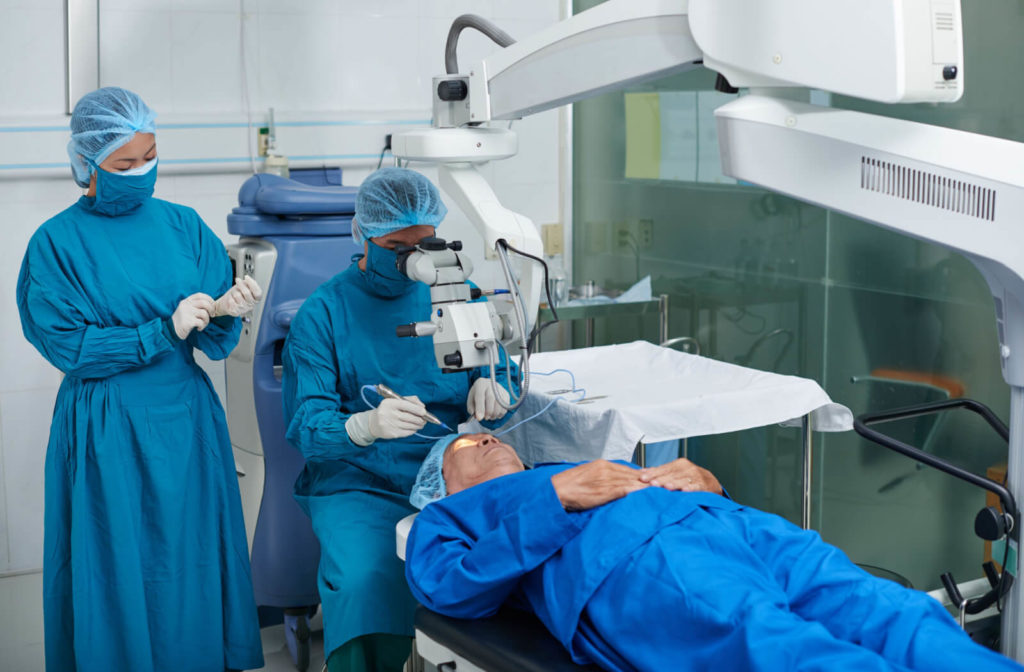Trustworthy Opticore Optometry: Raising Your Eye Health Experience
Trustworthy Opticore Optometry: Raising Your Eye Health Experience
Blog Article
The Comprehensive Eye Exam: What to Anticipate Throughout Your Visit to the Eye Physician
A visit to the eye doctor for a thorough eye examination is greater than a routine exam; it is a crucial action in guarding your visual health. From the first discussion of your clinical history to the precision of the aesthetic skill test, each component of the test serves a specific purpose. However just what takes place during the eye health analysis, and exactly how does it influence the prescription process? Recognizing these aspects is vital for those that desire to preserve ideal sight. As we check out each element, the importance of follow-up recommendations will certainly likewise end up being clear.
Initial Examination
The preliminary assessment throughout an eye exam works as a crucial foundation for comprehending a patient's aesthetic health demands. This stage sets the tone for the whole examination procedure, permitting the eye doctor to collect crucial info about the client's clinical history, way of living, and certain vision worries. By meticulously assessing any type of pre-existing conditions, drugs, or previous surgeries, the eye care professional can tailor the assessment to address individual needs efficiently.

Moreover, the first appointment is a chance for clients to articulate any type of concerns or issues, promoting a collective connection with their doctor. This communication not just makes sure that the person feels notified and comfortable yet also empowers them to participate proactively in their eye health and wellness administration. Jointly, these conversations allow the optometrist to develop a tailored assessment plan, ensuring optimum treatment and accurate diagnosis.
Aesthetic Acuity Examination
Starting the core elements of an eye exam, the visual acuity test is developed to evaluate the intensity and clearness of a client's vision. This vital evaluation assists determine how well an individual can determine letters or icons at a standard distance, typically making use of a Snellen chart (Opticore Optometry). The graph makes up rows of letters that lower in size from leading to base, with the person placed at a normal distance of 20 feet
During the test, the person is asked to cover one eye and check out out loud the tiniest line of letters they can see plainly. This procedure is repeated for the other eye. The results are taped as a portion, with 20/20 vision showing normal aesthetic acuity-- where the individual can see at 20 feet what a person with typical vision can see at that range.
The visual acuity test likewise recognizes possible refractive errors such as hyperopia, nearsightedness, or astigmatism, which may require restorative lenses. By developing a standard of aesthetic efficiency, the test is a crucial diagnostic tool that aids the eye care specialist in creating an appropriate treatment strategy customized to the person's special visual needs.
Eye Health Analysis
Adhering to the visual acuity test, an extensive eye wellness evaluation is conducted to ensure the total wellness of the eyes. This critical section of the eye test entails a detailed assessment of both the outside and internal structures of the eye.
Via the use of ophthalmoscopy or fundus photography, the retina, optic nerve, and blood vessels are thoroughly reviewed. In many situations, student extension is carried out to improve presence of the internal eye structures, although this might result in momentary light level of sensitivity for the client.
In addition, intraocular stress is measured to screen for glaucoma risk. This is usually done making use of tonometry, which can spot elevated pressure degrees that could suggest potential damage to the optic nerve. Collectively, these find out here now evaluations develop a thorough evaluation to preserve eye health.
Refraction and Prescription
Refraction is an innovative treatment carried out by eye care specialists to figure out the precise lens power required to remedy refractive errors such as nearsightedness, hyperopia, presbyopia, and astigmatism. The objective of this treatment is to assess just how light bends as it passes with the eye, permitting the professional to identify whether rehabilitative lenses are required for boosted visual skill.
During the refraction procedure, the client is asked to browse a phoropter, a gadget that contains numerous lenses. The practitioner will methodically change these lenses and ask the individual to compare clearness in between choices till the finest feasible vision is achieved. This treatment is vital in crafting an exact prescription that specifies the appropriate lens power for spectacles or contact lenses.
The prescription obtained from this treatment not only maximizes vision but likewise offers as a structure for picking ideal corrective eyeglasses. It is necessary to make certain read that prescriptions are consistently updated, as modifications in vision can happen in time, highlighting the importance of routine eye assessments. This meticulous focus to information helps maintain clear, comfy vision in life.
Follow-Up Suggestions

During a follow-up go to, the eye doctor will certainly perform a collection of tests to evaluate aesthetic skill and check for any changes in vision that could require an update to the prescription. Additionally, the follow-up gives a chance to talk about any pain or problems experienced with existing eyeglasses. Modifications can be made to ensure convenience and effectiveness, whether through lens alteration or framework changes.
For individuals with ongoing problems such as glaucoma, diabetes-related eye issues, or macular deterioration, even more frequent follow-ups may be necessary. These consultations are important for managing and potentially reducing the progression of eye condition. Complying with these referrals can significantly add to keeping aesthetic health and wellness and protecting against long-lasting complications.
Conclusion
The detailed eye exam is an essential procedure for maintaining visual health, including a detailed analysis of clinical history and vision worries. Trick elements include the visual acuity test, which examines vision quality, and the eye wellness analysis, which examines the general problem of the eyes.
A check out to the eye medical professional for a comprehensive eye exam is more than a routine examination; it is a critical action in securing your aesthetic wellness.Kicking off the core parts of an eye examination, the aesthetic skill test is created to assess the intensity and clearness of a client's vision.Adhering to the visual acuity test, a thorough eye health evaluation is carried out to make sure the total wellness of the eyes. These visits permit my response the eye treatment professional to keep track of changes in vision, update prescriptions, and examine the total health of the eyes. Trick elements consist of the visual skill examination, which assesses sight clarity, and the eye health analysis, which checks out the overall condition of the eyes.
Report this page